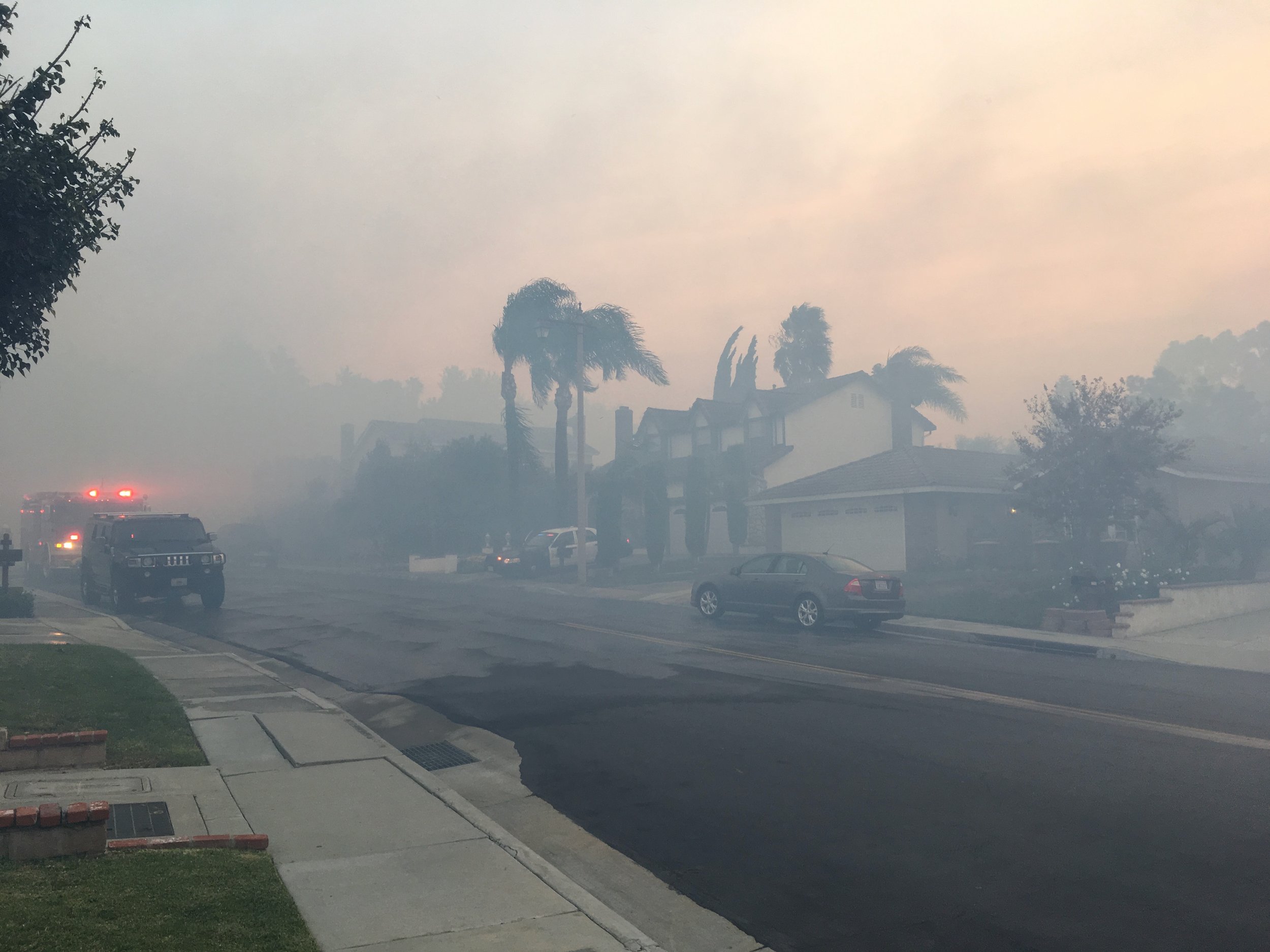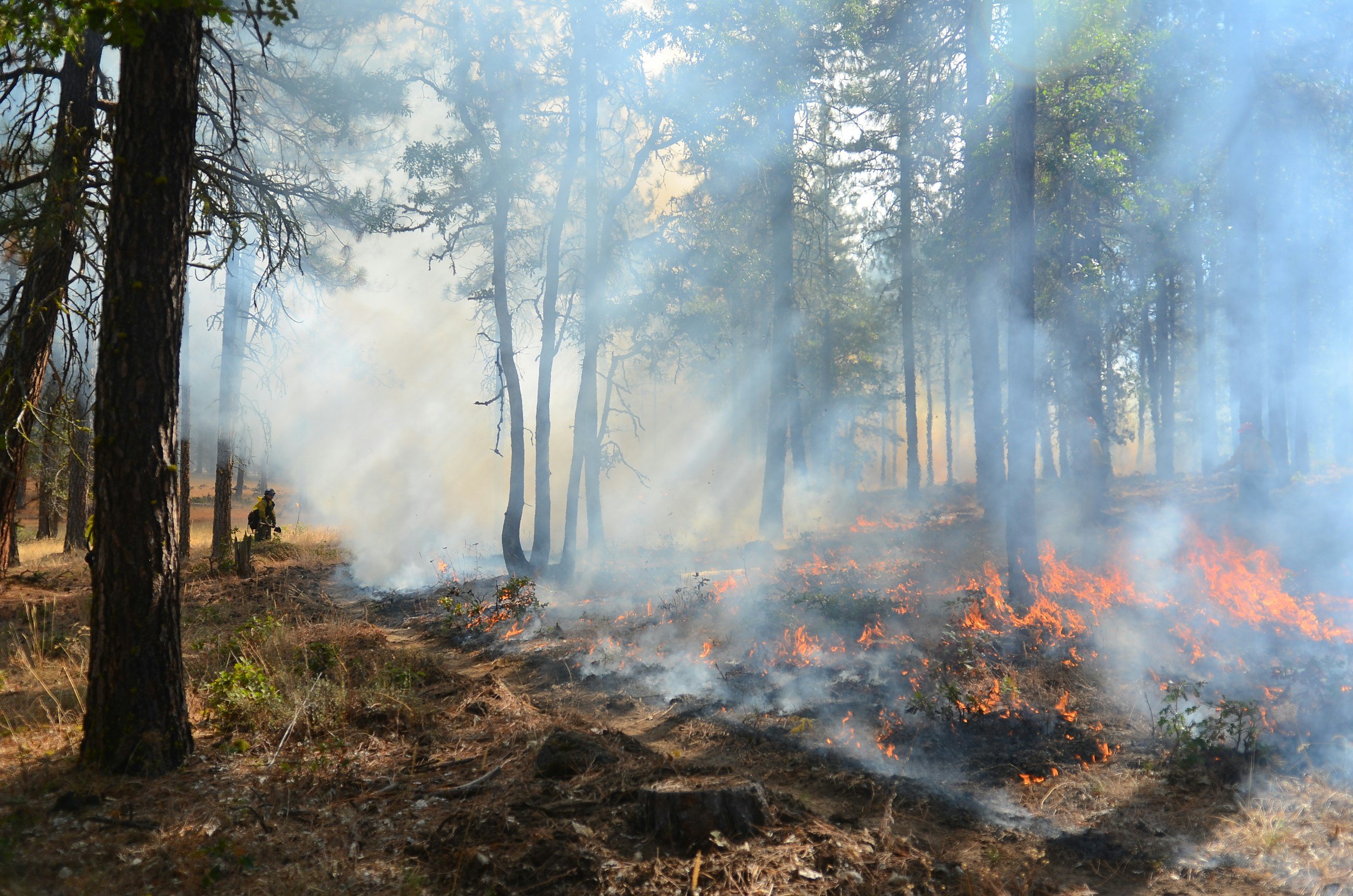
Fire Damage Restoration & Wildfire Smoke Cleanup Services
in Southern California
Helping Southern California communities recover from the devastating effects of wildfires. From Los Angeles to surrounding areas, we provide expert cleanup and restoration services to make your property safe and livable again. Our services include pre- and post-cleaning testing for soot, char, ash, lead, and asbestos, analyzed by a Certified Industrial Hygienist, ensuring a thorough assessment of contamination and safety risks.
Safety Services Management engaged in a panel discussion regarding the hazards linked to wildland fires and outlined measures to protect individuals and restore their properties.
FAQ: Returning Safely to Your Home After an Urban Wildfire
What should I do before returning to my home? Check for safety clearance to ensure local authorities have declared the area safe to return. Wear personal protective equipment (PPE) such as a well-fitted N95 mask or, ideally, a P100 respirator with VOC protection, which can be found at local hardware stores. Use nitrile, rubber, or latex gloves to protect against chemical absorption hazards when handling contaminated materials.
How can I evaluate my home for damage? Look for visible black soot, ash, or structural damage. If black soot is discovered inside the home, testing is highly recommended, as these substances can be extremely toxic and cause both short-term and long-term health issues. Testing will determine the extent of damage and provide a baseline for proper cleanup. Contact a Certified Industrial Hygienist (CIH) to evaluate and provide recommendations for safely removing contaminants. CIHs will often test for soot, char, and ash as part of a preliminary assessment to establish a baseline of contamination.
Why is soot and ash dangerous, and what precautions should I take? Black soot often contains toxic chemicals from burning plastics and other synthetic materials, which release volatile organic compounds (VOCs). VOCs are harmful chemicals that can irritate the respiratory system, damage internal organs, and even increase the risk of cancer. Always wear a P100 respirator with a VOC filter when handling soot or entering a contaminated area. Use gloves to avoid skin absorption of harmful chemicals. Ordinary combustibles, like wood or paper (Class A fires), produce less harmful residues compared to plastics and synthetics, which release highly toxic byproducts during combustion. Contamination is particularly dangerous near homes that burned, as they contain synthetic materials, plastics, and hazardous substances. In contrast, areas near burned brush, trees, and leaves produce ash that is less toxic.
Schedule a Free Assessment
FAQ: Continued
How can I tell if my property has toxic smoke contamination? Analytical laboratory testing conducted by a Certified Industrial Hygienist (CIH) is the most reliable method for identifying contamination levels, though it starts at around $3,000 for minimal testing. A less effective but visual method is to use a dry chem sponge to wipe horizontal and vertical surfaces. If black soot appears or a burnt plastic odor is present, this is a strong indicator of toxic contamination, and professional testing is highly recommended.
What should I do if soot and ash are observed? If soot and ash are found, removing them from all surfaces using a HEPA-filtered vacuum (High-Efficiency Particulate Air) is highly recommended to avoid reintroducing contaminants into the air. Do not use wet cleaning products on walls or surfaces without first vacuuming with a HEPA filter, as this can push contaminants into drywall or other porous materials, making cleanup more difficult. Proper cleanup requires removing contaminants, not just masking the smell with an odor remover chemical. Replace your HVAC (Heating, Ventilation, and Air Conditioning) filter with a MERV 13 or higher-rated filter and leave the system running in fan mode to help remove airborne contaminants. Keep windows closed until outdoor ash and soot levels subside, which will reduce significantly after the first heavy rain or snow. However, airborne contaminants may still be present during demolition phases and wind events.
Encourage safe cleanup in your neighborhood. Avoid using leaf blowers to remove ash, as this reintroduces contaminants into the air, increasing exposure risks and recontaminating cleaned areas. It is also unhealthy to breathe the airborne particles stirred up by leaf blowers. Instead, use methods such as HEPA-filtered vacuums or wet wiping techniques that capture and contain ash and soot rather than redistributing them.
How do I choose a remediation company? Select a remediation company that works with a Certified Industrial Hygienist (CIH) and follows their cleanup recommendations. Ensure the company uses proper equipment, including HEPA-filtered vacuums, and provides thorough cleaning of all surfaces. Be cautious of companies that claim to remove odors or contaminants with simple wipe-downs or odor-removing chemicals, as this may not address the root of the problem. Proper remediation involves removing the contaminants, not just masking their effects.
Why is professional testing and cleaning important? Professional testing provides a detailed understanding of the extent of damage and contamination, which is crucial for safe remediation. Testing also helps secure insurance claims and government assistance for fire-related damages. Cleaning by trained professionals ensures toxic residues are removed, protecting your health and preventing further contamination.
What financial assistance is available for testing and remediation? Check with your insurance provider to determine if your policy covers testing and cleanup. Local or federal disaster relief agencies may also offer financial assistance for fire-related damages. Proper testing by a Certified Industrial Hygienist will help secure these funds by providing documented proof of contamination.
What precautions should I take during cleanup? Avoid DIY cleanup if black soot or ash is present, as improper handling can spread toxins and increase exposure risks. Always wear PPE, including a P100 respirator with VOC filters, gloves, and protective clothing. For further safety, consult professionals to handle contamination.
Why Choose Us?
We treat every client as if they are family, providing personalized care and attention to help you recover and restore your property. Check us out on Yelp and read what our clients have to say about us.
Contact Us Today
Don’t wait to restore your property after fire damage. Call us now at (714) 455-9832 or fill out our Contact Form above to receive an estimate.
Serving: Los Angeles, Orange County, Riverside, San Bernardino, and Ventura County.
Additional Resources
Cleaning Products and Tools:
Dry Sponges Cleaners: www.example.com/dry-sponges-cleaners
Meleluca Cleaning Products: www.example.com/meleluca-products
7th Generation Cleaning Products: www.example.com/7th-generation-products
Air Filtration and Cleaners:
California Air Resources Board - Air Cleaner Info: www.ww2.arb.ca.gov/air-cleaner-information-consumers
CARB-Certified Air Cleaning Devices: www.ww2.arb.ca.gov/list-carb-certified-air-cleaning-devices
EPA Guide to Air Cleaners in the Home: www.epa.gov/indoor-air-quality-iaq/guide-air-cleaners-home
What is a HEPA Filter?: www.epa.gov/indoor-air-quality-iaq/what-hepa-filter
What is a MERV Rating?: www.epa.gov/indoor-air-quality-iaq/what-merv-rating
Wildfire Safety:
South Coast AQMD - Wildfire Smoke & Ash Safety Tips: www.aqmd.gov/home/air-quality/wildfire-health-info-smoke-tips
NIEHS Wildfire Response Training Tool: tools.niehs.nih.gov/wetp/index.cfm?id=2455
California Department of Public Health - N95 FAQs: www.cdph.ca.gov/Programs/EPO/Pages/Wildfire%20Pages/N95-Respirators-FAQs.aspx
General Air Quality and Particulates:
AirNow.gov - How to Use the Site: www.airnow.gov/how-to-use-this-site/
Air Quality Index Basics: www.airnow.gov/aqi/
EPA - Particulate Matter Basics: www.epa.gov/pm-pollution/particulate-matter-pm-basics
Dioxins and Furans Fact Sheet: archive.epa.gov/epawaste/hazard/wastemin/web/pdf/dioxfura.pdf
Research and Academic Resources:
Holder et al. (2020): Estimate of pollutant emissions from fires in the wildland-urban interface.
UCLA LOSH Resources and Support: LA Wildfires: Disaster and Emergency Response for Workers - Wildfires. www.losh.ucla.edu/la-wildfires-resources-and-support
Industrial Hygienists/Consultant Listings:
American Industrial Hygiene Association – general website: https://www.aiha.org/
American Industrial Hygiene Association – Consultant listing: https://www.aiha.org/consultants-directory
Board for Global EHS Credentialing® (BGC®) – general website: https://gobgc.org/
Board for Global EHS Credentialing® (BGC®) – searchable roster: https://portalabih.cyzap.net/dzapps/dbzap.bin/apps/assess/webmembers/secure/manage?webid=ABIH&pToolCode=cert-search&pAdd=Yes

Our Services
Fire Damage Restoration and Smoke Cleanup
We remove soot, ash, and smoke residues from your property, restoring it to pre-damage condition with thorough cleaning and remediation techniques.
Debris and Waste Removal
Debris Removal: Safe and efficient removal of fire-related debris and hazardous materials.
Fire Retardant Cleaning
Siding and Windows
Rooftops
Driveways
Air Duct Cleaning
Standard Air Duct Cleaning: Thoroughly cleaning air ducts to remove soot and improve air quality.
Custom/Commercial Air Duct Cleaning: Tailored solutions for commercial and complex systems.
Smoke Odor Elimination
Smoke Removal (Light Damage): Neutralizing odors from minor smoke exposure.
Smoke Removal (Heavy Damage): Advanced treatments for severe smoke damage.
Equipment Rentals
Air Scrubber Rentals (24hrs): Efficient air cleaning for improved indoor air quality.
Additional Services
Laundry Cleaning Services: Specialized cleaning for fabrics exposed to smoke.
Skip Loader Services: Debris and material handling with skip loaders.
Front-End Loader Services: Heavy-duty equipment for cleanup operations.
Pressure Washing: Deep cleaning for exterior surfaces.

The 2025 Southern California wildfires left many buildings contaminated by toxic smoke, even those far from burn zones. Readers will learn about the dangers of wildfire smoke, which contains hazardous particles like heavy metals, asbestos, VOCs, and carcinogens, posing serious health risks and causing structural damage. The article explains how smoke affects health, damages property, and outlines the steps needed for professional remediation to restore safety.